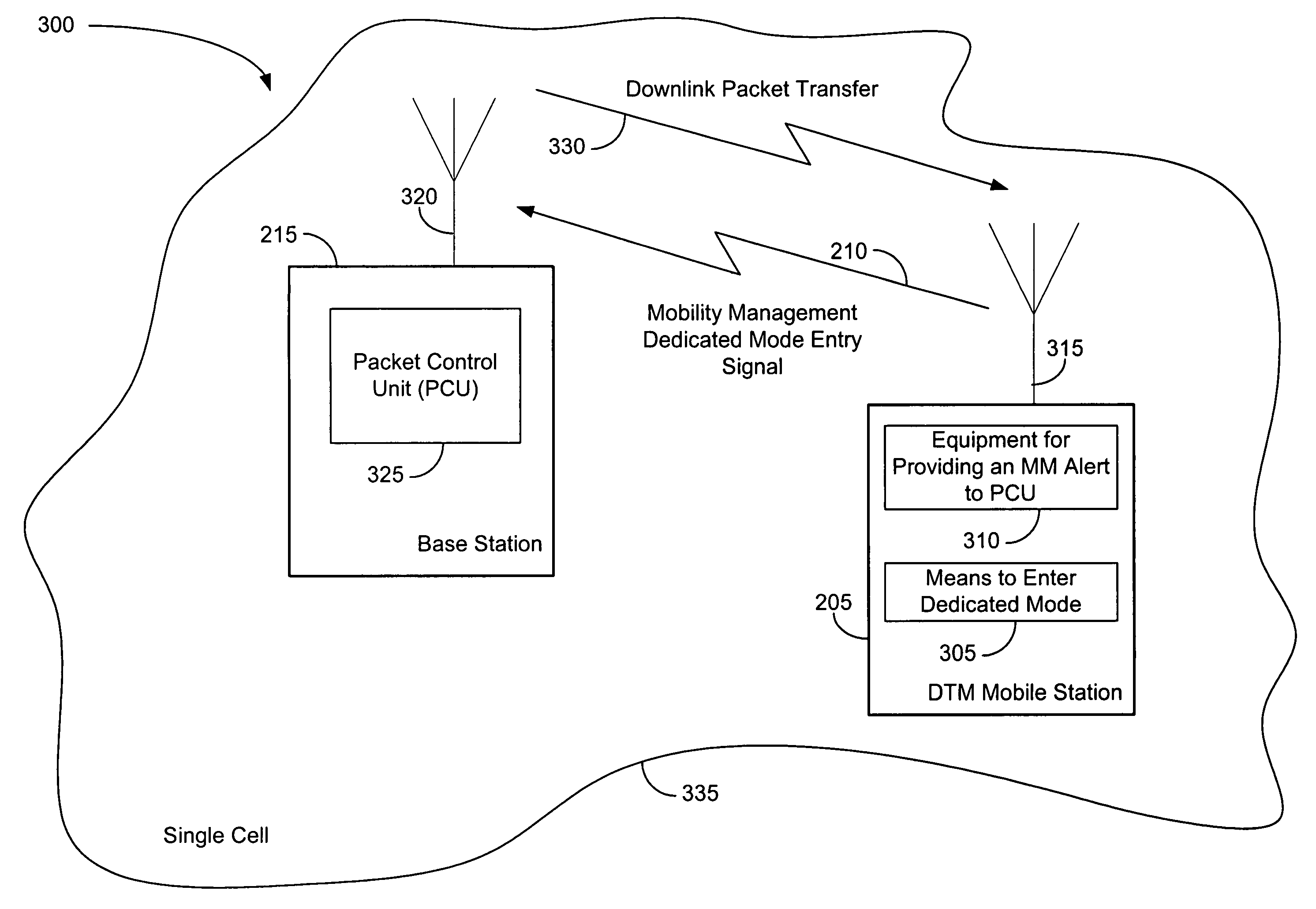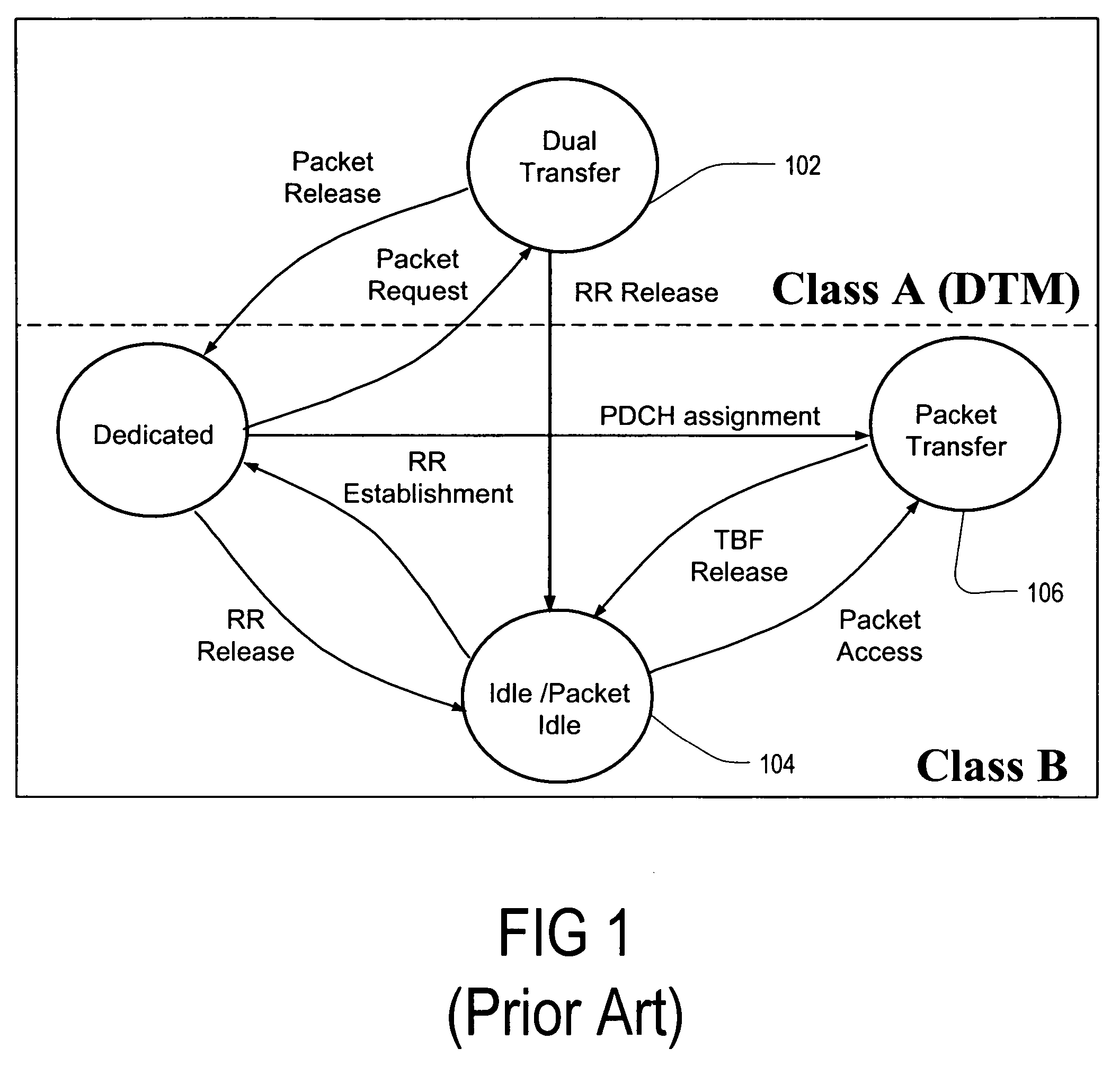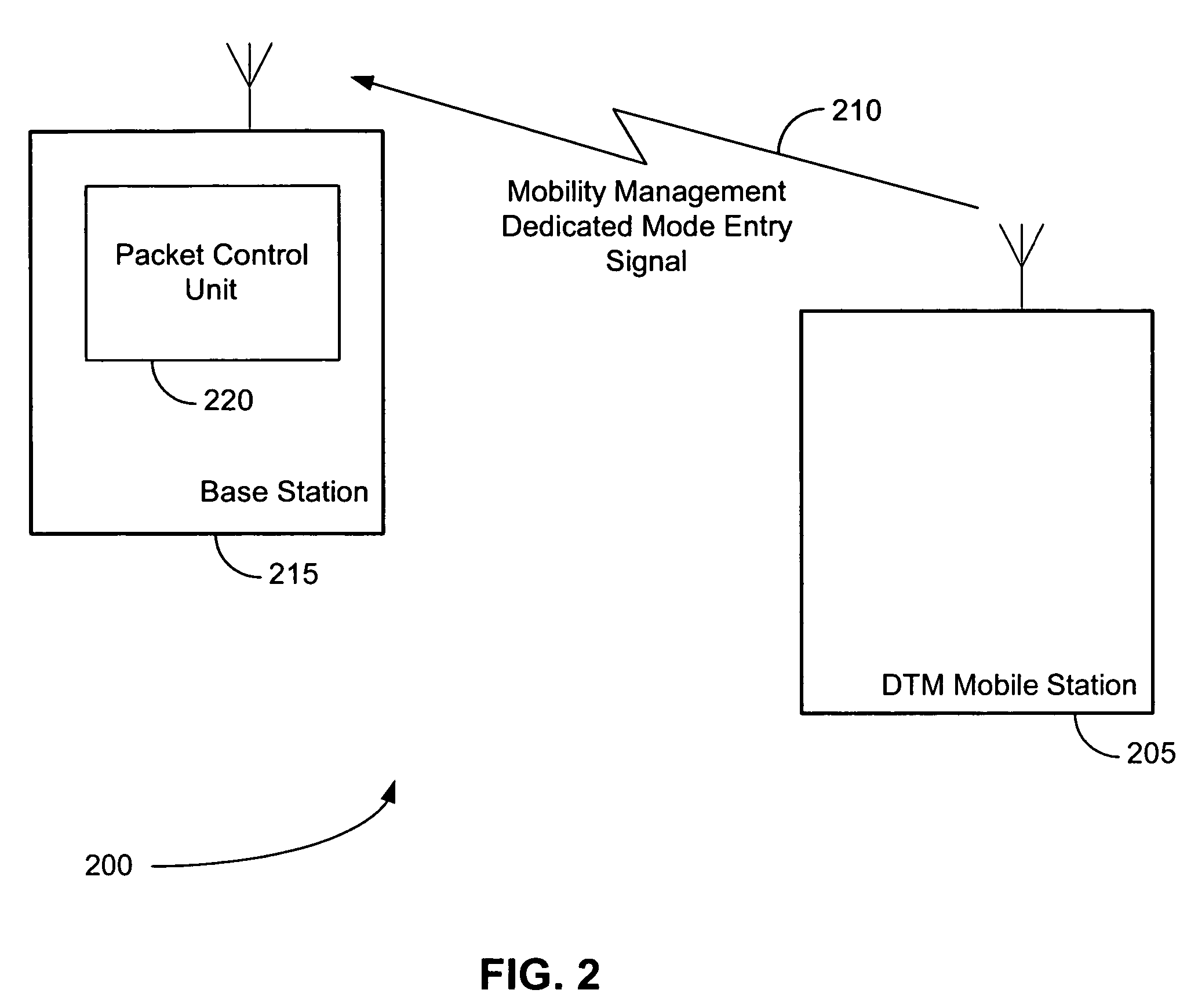Method and system of enhanced dual transfer mode using mobility management
a dual transfer mode and mobility management technology, applied in the field of wireless telecommunication, can solve the problems of high development cost, improbability, and unsuitable services of circuit switched (cs) bearers for certain types of applications with a bursty nature, and achieve the effect of reducing the internal signaling load of the bs
- Summary
- Abstract
- Description
- Claims
- Application Information
AI Technical Summary
Benefits of technology
Problems solved by technology
Method used
Image
Examples
case 1
[0041] The MS establishes a CS connection while being in MM Ready state. In this case the MS shall use one of the new procedures described above. This will trigger a DTM coordination message that is sent from the DX to the PCU. Based on this message the PCU is able to detect that the MS is having a CS connection when the PCU receives a request to establish a PS data transfer for the MS in DL direction.
case 2
[0042] The MS establishes a CS connection while being in MM Standby state. In this case the MS does not perform any DTM-specific procedure and the PCU is not informed about the MS. Note that in this case the PCU does not need to know the mode of the MS because the GPRS core network cannot send data packets for the MS without a PS paging procedure. This is because the MS is in MM Standby state.
case 3
[0043] The MS moves from MM Standby state to MM Ready state during the CS connection. Such a change in the MM state is triggered only if the MS transmits a data packet to the network. In this case the MS has to apply a DTM-specific procedure (a GTTP message or a request for DTM call establishment). This will trigger a DTM coordination message that is sent from the DX to the PCU. Based on this message the PCU is able to detect that the MS is having a CS connection when the PCU receives a request to establish a PS data transfer for the MS in DL direction.
PUM
 Login to View More
Login to View More Abstract
Description
Claims
Application Information
 Login to View More
Login to View More - R&D
- Intellectual Property
- Life Sciences
- Materials
- Tech Scout
- Unparalleled Data Quality
- Higher Quality Content
- 60% Fewer Hallucinations
Browse by: Latest US Patents, China's latest patents, Technical Efficacy Thesaurus, Application Domain, Technology Topic, Popular Technical Reports.
© 2025 PatSnap. All rights reserved.Legal|Privacy policy|Modern Slavery Act Transparency Statement|Sitemap|About US| Contact US: help@patsnap.com



